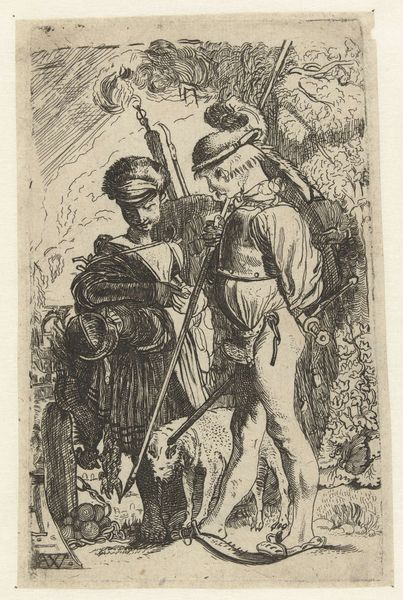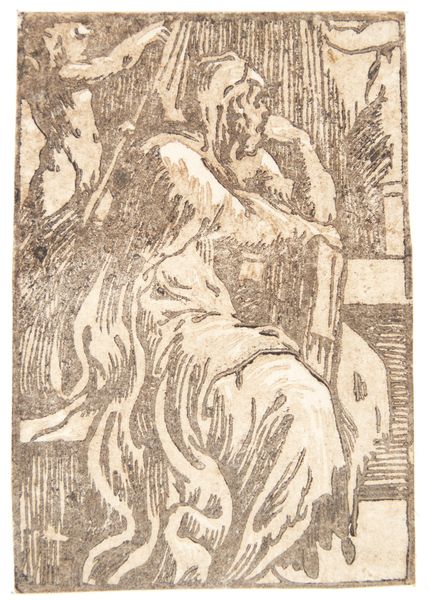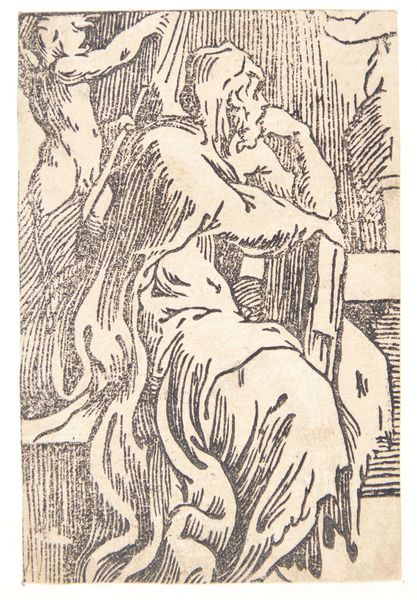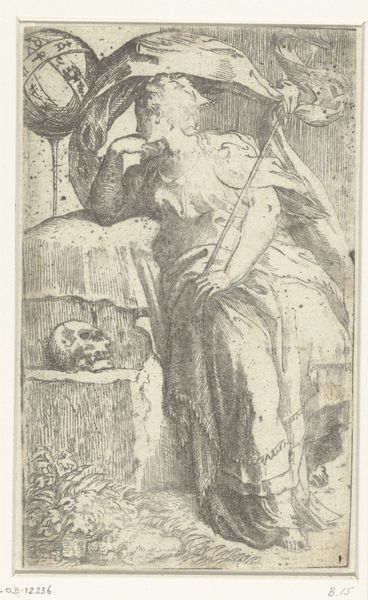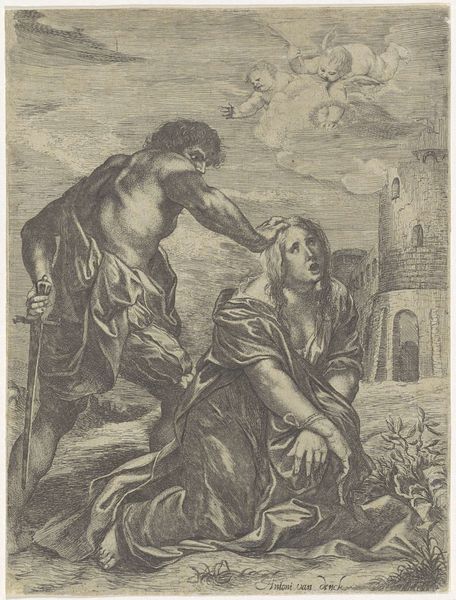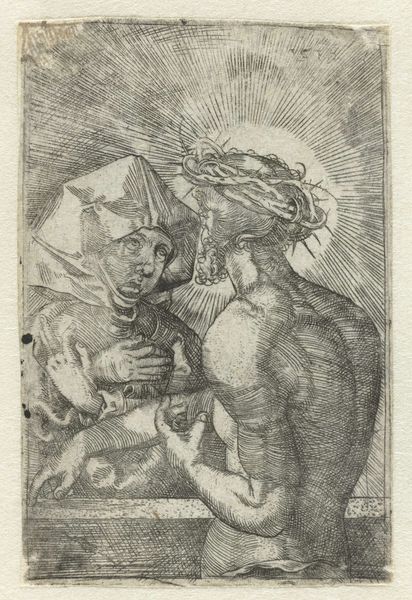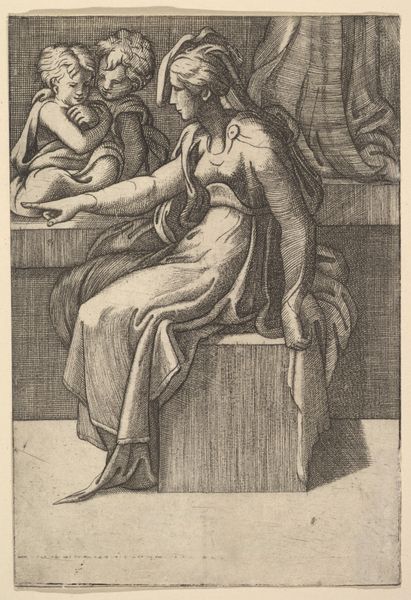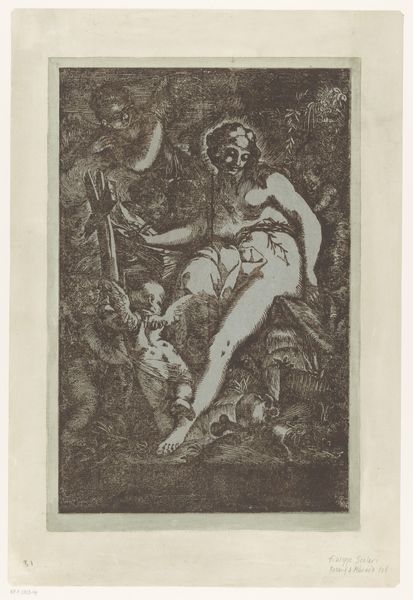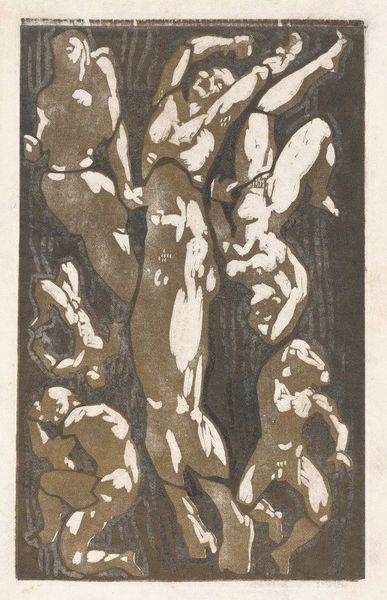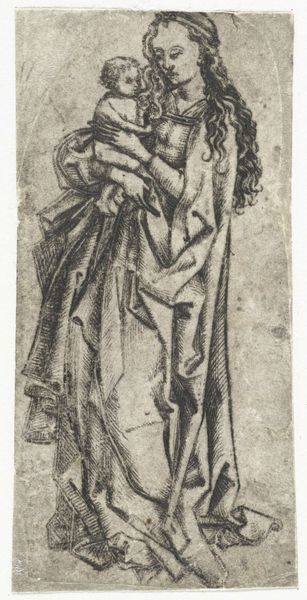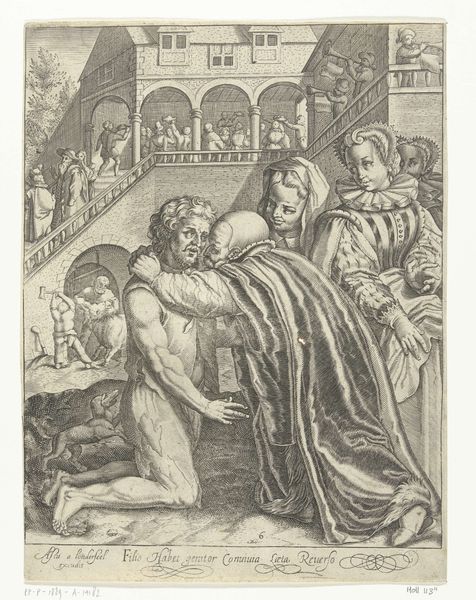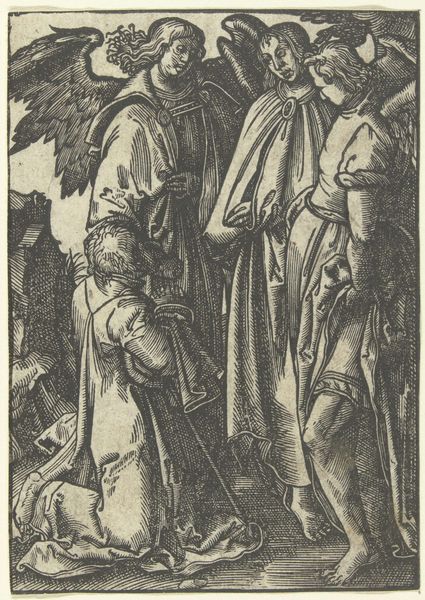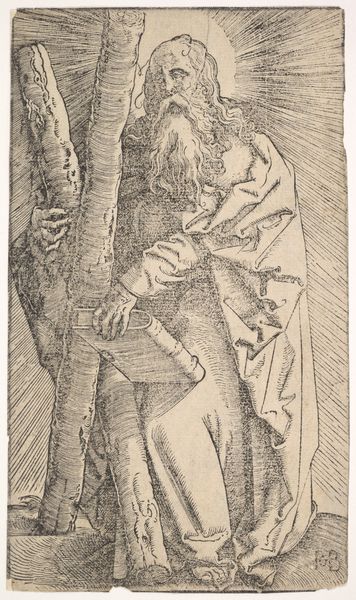
drawing, ink, pen, engraving
#
drawing
#
baroque
#
pen sketch
#
old engraving style
#
figuration
#
ink
#
ink drawing experimentation
#
pen work
#
pen
#
history-painting
#
engraving
Dimensions: height 287 mm, width 194 mm
Copyright: Rijks Museum: Open Domain
Moyses van Wtenbrouck created this print, Hagar en de engel, sometime in the first half of the 17th century. During the 17th century, the Dutch Republic was a global hub of commerce and culture, but also deeply patriarchal. Wtenbrouck’s print depicts a biblical scene, ripe with the tensions of class and gender. We see Hagar, the servant of Sarah, sitting dejectedly. Her body language suggests a deep despair. An angel stands behind her, an ethereal figure offering solace in her banishment to the desert. The story of Hagar is one of societal power dynamics. As an Egyptian servant, Hagar’s body was used by her mistress Sarah to produce an heir for Abraham. When Hagar conceived, she was resented by Sarah and eventually expelled. Wtenbrouck captures Hagar’s personal struggle. The quiet moment between the angel and Hagar invites us to reflect on how societal structures affect individual lives.
Comments
No comments
Be the first to comment and join the conversation on the ultimate creative platform.
